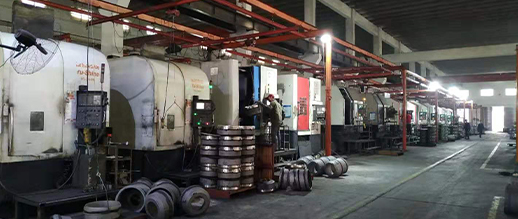
-
 Afrikaans
Afrikaans -
 Albanian
Albanian -
 Amharic
Amharic -
 Arabic
Arabic -
 Armenian
Armenian -
 Azerbaijani
Azerbaijani -
 Basque
Basque -
 Belarusian
Belarusian -
 Bengali
Bengali -
 Bosnian
Bosnian -
 Bulgarian
Bulgarian -
 Catalan
Catalan -
 Cebuano
Cebuano -
 Corsican
Corsican -
 Croatian
Croatian -
 Czech
Czech -
 Danish
Danish -
 Dutch
Dutch -
 English
English -
 Esperanto
Esperanto -
 Estonian
Estonian -
 Finnish
Finnish -
 French
French -
 Frisian
Frisian -
 Galician
Galician -
 Georgian
Georgian -
 German
German -
 Greek
Greek -
 Gujarati
Gujarati -
 Haitian Creole
Haitian Creole -
 hausa
hausa -
 hawaiian
hawaiian -
 Hebrew
Hebrew -
 Hindi
Hindi -
 Miao
Miao -
 Hungarian
Hungarian -
 Icelandic
Icelandic -
 igbo
igbo -
 Indonesian
Indonesian -
 irish
irish -
 Italian
Italian -
 Japanese
Japanese -
 Javanese
Javanese -
 Kannada
Kannada -
 kazakh
kazakh -
 Khmer
Khmer -
 Rwandese
Rwandese -
 Korean
Korean -
 Kurdish
Kurdish -
 Kyrgyz
Kyrgyz -
 Lao
Lao -
 Latin
Latin -
 Latvian
Latvian -
 Lithuanian
Lithuanian -
 Luxembourgish
Luxembourgish -
 Macedonian
Macedonian -
 Malgashi
Malgashi -
 Malay
Malay -
 Malayalam
Malayalam -
 Maltese
Maltese -
 Maori
Maori -
 Marathi
Marathi -
 Mongolian
Mongolian -
 Myanmar
Myanmar -
 Nepali
Nepali -
 Norwegian
Norwegian -
 Norwegian
Norwegian -
 Occitan
Occitan -
 Pashto
Pashto -
 Persian
Persian -
 Polish
Polish -
 Portuguese
Portuguese -
 Punjabi
Punjabi -
 Romanian
Romanian -
 Russian
Russian -
 Samoan
Samoan -
 Scottish Gaelic
Scottish Gaelic -
 Serbian
Serbian -
 Sesotho
Sesotho -
 Shona
Shona -
 Sindhi
Sindhi -
 Sinhala
Sinhala -
 Slovak
Slovak -
 Slovenian
Slovenian -
 Somali
Somali -
 Spanish
Spanish -
 Sundanese
Sundanese -
 Swahili
Swahili -
 Swedish
Swedish -
 Tagalog
Tagalog -
 Tajik
Tajik -
 Tamil
Tamil -
 Tatar
Tatar -
 Telugu
Telugu -
 Thai
Thai -
 Turkish
Turkish -
 Turkmen
Turkmen -
 Ukrainian
Ukrainian -
 Urdu
Urdu -
 Uighur
Uighur -
 Uzbek
Uzbek -
 Vietnamese
Vietnamese -
 Welsh
Welsh -
 Bantu
Bantu -
 Yiddish
Yiddish -
 Yoruba
Yoruba -
 Zulu
Zulu
Understanding the Mechanics of Rear Drum Brakes and Their Functionality
Understanding How Rear Drum Brakes Work
Rear drum brakes are a crucial component of a vehicle's braking system, offering reliable stopping power, particularly in older cars and certain modern vehicles. While disc brakes have become increasingly popular in recent years, understanding the mechanics of drum brakes can give insight into their function, advantages, and maintenance.
The Basic Components of Drum Brakes
Drum brakes consist of several key components the brake drum, brake shoes, wheel cylinder, and springs. The brake drum is a hollow, cylindrical metal piece that is attached to the wheel and rotates with it. Inside the drum, the brake shoes are positioned against its inner surface. These shoes are lined with friction material that comes into contact with the drum to create stopping power.
The wheel cylinder is a critical component located at the top of the brake assembly. It contains pistons that extend when hydraulic pressure is applied. This pressure is generated when the driver presses the brake pedal, causing brake fluid to flow from the master cylinder to the wheel cylinder. The extensions of the pistons push the brake shoes outward against the brake drum, creating friction that slows down the vehicle.
How Drum Brakes Function
When the driver applies the brakes, the following sequence of events occurs
1. Brake Pedal Engagement Pressing the brake pedal activates the master cylinder, which generates hydraulic pressure. 2. Hydraulic Pressure Transmission The brake fluid travels through the brake lines and enters the wheel cylinder in the rear drum brake assembly.
3. Piston Movement The hydraulic pressure forces the pistons inside the wheel cylinder to move outward.
5. Friction and Stopping The friction generated between the brake shoes and the drum slows down the wheel’s rotation, bringing the vehicle to a stop.
how do rear drum brakes work

6. Brake Release When the driver releases the brake pedal, hydraulic pressure decreases. Springs attached to the brake shoes retract them back into their original position, allowing the wheel to rotate freely again.
Advantages of Drum Brakes
While disc brakes are often favored for their performance and heat dissipation characteristics, rear drum brakes still offer notable benefits
- Cost-Effectiveness Drum brakes are generally less expensive to manufacture and maintain compared to disc brakes. This makes them a common choice for budget-friendly vehicles.
- Built-in Self-Adjusting Features Many drum brake systems include self-adjusting mechanisms that can automatically compensate for brake shoe wear, ensuring consistent braking performance over time.
- Effective Parking Brake Functionality Drum brakes are often more efficient for parking brake applications, as they provide a more secure hold when the vehicle is parked.
Maintenance of Drum Brakes
Maintaining rear drum brakes is essential for vehicle safety and performance. Regular inspections should include checking the brake shoes for wear, ensuring the brake drum is free of cracks and scoring, and evaluating the condition of the wheel cylinder and springs. It’s also important to replace the brake fluid periodically to maintain the hydraulic system’s integrity.
Given the specific setup of drum brakes, if any component shows signs of wear or malfunction, it can affect the entire braking system. Squeaking or grinding noises, a soft brake pedal, or a vehicle pulling to one side when braking are all symptoms indicating potential issues with the drum brake system.
Conclusion
Rear drum brakes, while sometimes overshadowed by their disc counterparts, play a significant role in the overall performance of a vehicle. Their simplicity, cost-effectiveness, and reliable braking function make them an enduring choice for many cars. By understanding how they work and prioritizing regular maintenance, drivers can ensure their safety and the longevity of their vehicle's braking system.
-
What Are Drum BrakesNewsJul.07,2025
-
Understanding Brake Drum MaterialNewsJul.07,2025
-
Semi-Trailer Brake Drum: A Key Component for Extreme Loads and Long-Distance TransportNewsJul.07,2025
-
Drum Brake Pads for SaleNewsJul.07,2025
-
Brake Drums for SaleNewsJul.07,2025
-
Brake Drum ManufacturerNewsJul.07,2025
-
Aluminum Brake Drums: The Future of High-Performance CarsNewsJul.07,2025
